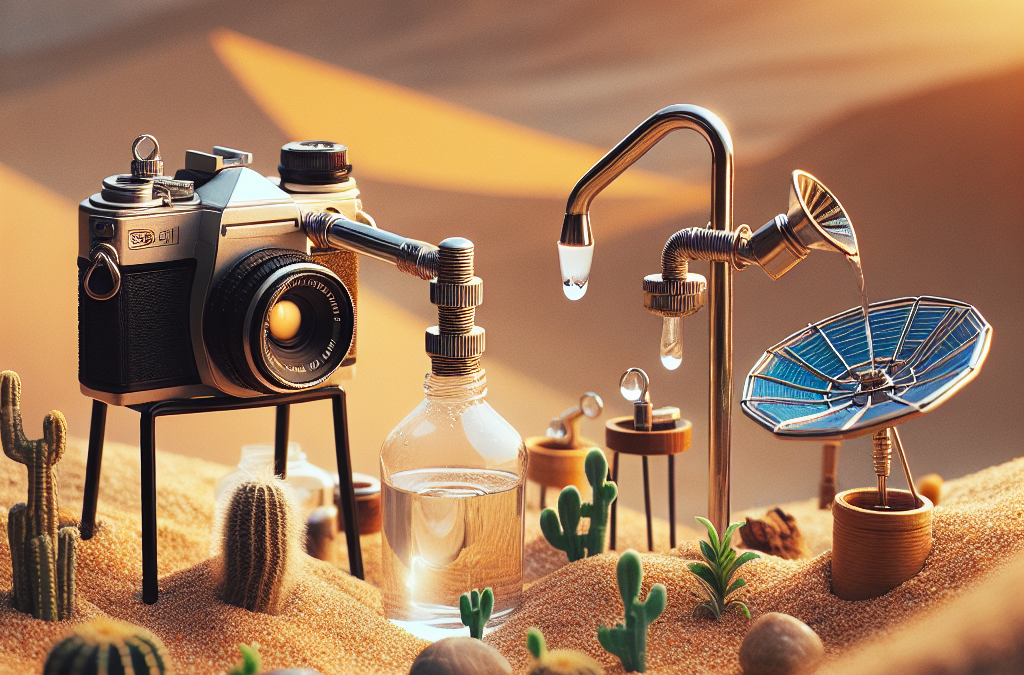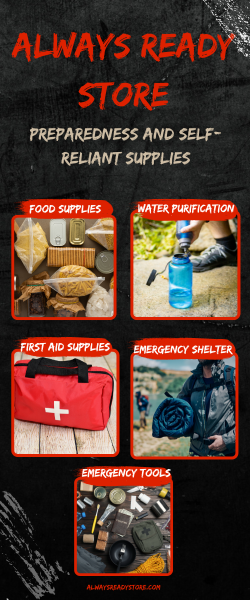Understand Your Body’s Needs
Recognizing Signs of Dehydration
First off, it’s crucial to understand how your body signals that it needs water. You might experience common symptoms like dry mouth, fatigue, or headaches. These can be sneaky signs that you’re running low on hydration, especially when water access is scarce.
As I’ve experienced, dehydration can sneak up on you, especially during hot weather or after intense physical activity. Don’t wait until you’re extremely thirsty to think about your hydration, because by that time, you may already be dehydrated.
Pay attention to your urine! If it’s dark yellow or amber, that’s your body hollering for more H2O. And trust me, being mindful of these signals can help prevent nasty headaches or fatigue that can be debilitating.
Calculate Your Water Requirements
It can also be helpful to understand your daily water requirements. On average, adults need about 2 to 3 liters a day, but this varies based on activity levels and environmental conditions. When water sources are limited, being strategic about this is essential.
I usually take into account my activities for the day. If I’m hiking in the heat, I know I’ll need more water. Tracking my water intake through apps or even just keeping a mental note has been a lifesaver. It helps me ensure I’m drinking enough, especially when access to water isn’t guaranteed.
It’s also a good idea to adjust your intake based on your body’s signals and your personal habits. If I’ve been sweating a lot or feeling especially thirsty, I make it a point to drink more, even if it means rationing my current water supply.
Thank you for reading this post, don't forget to subscribe NOW for FREE!
Adapt to Your Environment
Your environment plays a key role in your hydration needs. I’ve learned that when I’m out in the sun for long periods, staying in the shade or taking a breather helps manage my hydration without guzzling all my water at once.
On colder days, I often find myself less thirsty, but that doesn’t mean I should ignore my hydration. I make it a habit to sip regularly, even when I’m not feeling parched. It’s like muscle memory after a while—once you get into the habit, it becomes second nature.
So, when you’re out in nature or in a dry environment, remember to tweak your hydration strategy according to what your body requires. Trust me, your future self will thank you for it when you’re not feeling sluggish!
Utilize Alternative Hydration Sources
Incorporate High-Water Content Foods
One of my favorite tricks for staying hydrated without drowning in water is loading up on fruits and vegetables with high water content. Items like cucumbers, watermelon, and oranges not only help deliciously quench my thirst but also provide essential nutrients.
I often make smoothies or salads packed with these ingredients as a refreshing way to hydrate. It’s like multi-tasking for your body; you’re not just drinking water—you’re getting vitamins and minerals at the same time.
During times when water is limited, I try to have a stash of these snacks available. If I know I’m going to be in a place with little access to clean water, having these foods ensures I’m still fueling my body properly.
Explore Hydration Options Beyond Water
Have you ever thought about alternative hydration sources like herbal teas or electrolyte drinks? I’ve found that these options not only taste great but can also provide added benefits, especially when I’m sweating a lot or feeling drained.
You’d be surprised how a nice cup of herbal tea can perk me up, or how coconut water can replenish my electrolytes when fresh water is scarce. It’s all about being inventive and trying things out to see what works best for you.
Just remember to check labels on ready-to-drink options, as they can be loaded with sugar. Look for natural, low-sugar options if you’re going this route to keep it healthy and hydrating without any weird aftershocks.
Carry Portable Water Sources
When I venture out, I always carry a reusable water bottle with a built-in filter. This small addition has been a game-changer for me, allowing me to drink from streams or refill at public fountains with peace of mind.
If you don’t have a water filter, carrying purification tablets can also come in handy. In situations where I’m unsure about water quality, these tablets enable me to make ordinary water safe to drink, which is super comforting when I’m outdoors.
So, make sure to prepare yourself ahead of time before heading out by packing these essentials. It’s all about being ready and making the most of what’s available!
Monitor Your Hydration Regularly
Set Reminders to Drink Water
One simple, yet incredibly effective tip I personally rely on is setting reminders on my phone to drink water. Sure, it sounds a bit anxious at first, but trust me, it’s easy to forget to hydrate when caught up in daily activities.
What I’ve started doing is setting an alarm every couple of hours to remind myself to drink. When the alarm goes off, I simply knock back some water. It’s become part of my routine, and I bet it could work for you too!
Over time, I’ve found that this habit not only keeps my energy up but greatly reduces the chances of that dreaded dehydration headache later on. The key is consistency!
Track Your Intake
There are amazing apps and fitness trackers available nowadays that can help you monitor your water intake. I’ve played around with several and found them to be quite motivating. Seeing my daily hydration levels has encouraged me to make better choices!
By logging what I drink, I’ve gained insight into my habits and see that I often underestimate my daily needs. This awareness helps me adjust and prevent those moments when I realize I’m way behind on hydration.
If tech isn’t your jam, keeping a notepad might do the trick too. It could be as simple as marking down every glass of water you drink throughout the day. Just figure out what works best for you!
Assess Hydration Effects on Performance
Finally, I’ve noticed how maintaining good hydration directly impacts my performance, whether exercising or at work. When dehydrated, I become sluggish and struggle to concentrate. It’s all about feeling good and functioning at my best.
When I’m well-hydrated, my energy levels soar, and tasks feel more manageable. I complete my workouts without feeling wiped afterward, and I promise, a clear mind makes all the difference in productivity.
So, pay close attention to how your body responds to your hydration habits. I guarantee it’ll motivate you to stay on top of your water game when you notice how so much better you feel each day!
Make a Plan for Emergencies
Create Your Hydration Strategy
Life throws curveballs all the time! I always make it a priority to have a hydration strategy ready for emergencies. If I’m going somewhere that might lack water sources, I mentally create a game plan on how to manage my intake effectively.
This strategy might involve figuring out how much water to bring along, identifying potential water sources, and setting reminders to hydrate. Planning ahead saves me a lot of stress when water is running low. It makes those situations less scary because I have backup plans!
Always remember: Preparation is key. If I’m heading into the wilderness, I’ll know exactly how to ration my water while drinking enough to stay functional. This approach has been a lifesaver more than once!
Know How to Purify Water
If you find yourself in a pinch, knowing how to purify water can be an invaluable skill. I’ve learned various methods, from boiling water to using filtration systems or solar purification, depending on the situation.
Carrying small water purification tablets can also be a game-changer for me, especially when traveling. I can fill up from a creek or tap and turn untrustworthy sources into something safe to drink. It feels empowering to have these skills in my back pocket!
Prepare yourself by practicing these methods beforehand. Test out purification tablets at home to get comfortable with them. This knowledge could be invaluable when you find yourself in an unexpected scenario!
Share Your Strategy with Others
Lastly, don’t forget to share your hydration strategies with friends or family. I find that discussing what works for me encourages others to take their hydration seriously as well. We reinforce each other’s good habits!
Maybe plan hikes or outdoor activities together where water management can be a joint effort, swapping tips and tricks. It’s super reassuring knowing we’re all on the same page and supporting each other in staying hydrated.
Who knows? You might even learn something new from them that you can incorporate into your routine. Always keep that line of communication open; it makes for a supportive community!
FAQs
What are some signs I might be dehydrated?
Common signs include dry mouth, fatigue, dark yellow urine, and headaches. It’s crucial to tune into these signals before they escalate.
How much water should I drink if water sources are limited?
The general recommendation is to aim for about 2 to 3 liters daily, but adjust based on activity levels and weather conditions.
What foods can help with hydration?
Fruits and vegetables with high water content, like cucumbers, watermelon, and oranges, are fantastic options to boost hydration.
What are some alternative hydration sources besides water?
Herbal teas, coconut water, and low-sugar electrolyte drinks are great alternatives worth considering when water is limited.
Why is it important to monitor hydration?
Regularly monitoring your intake ensures you’re meeting your hydration needs and helps you maintain energy levels for daily activities.






